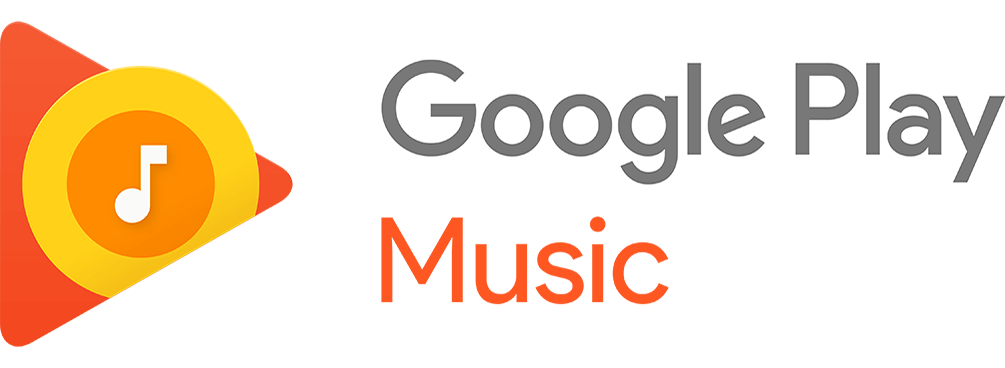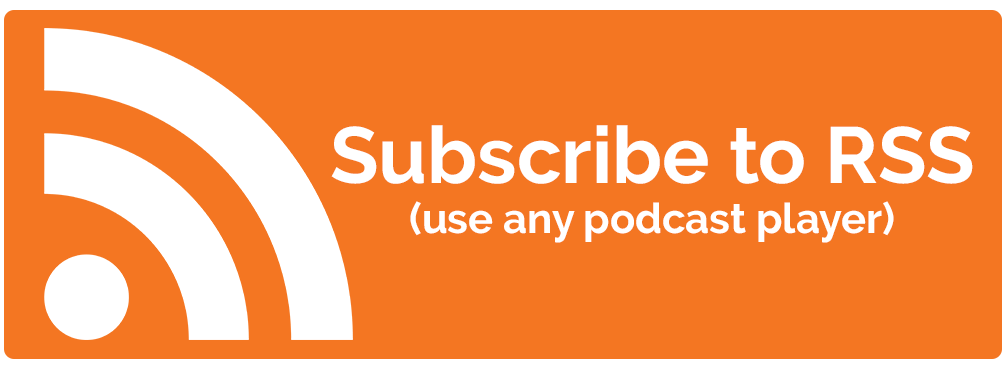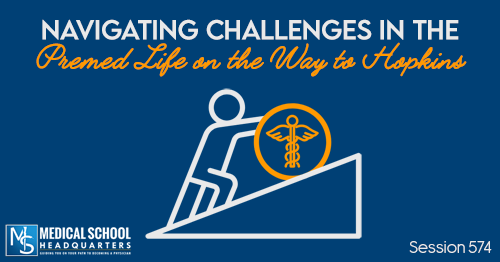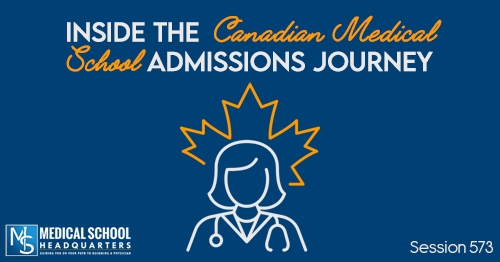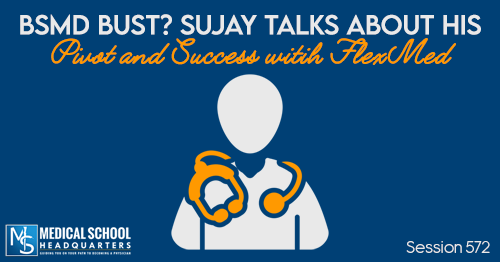Apple Podcasts | Google Podcasts
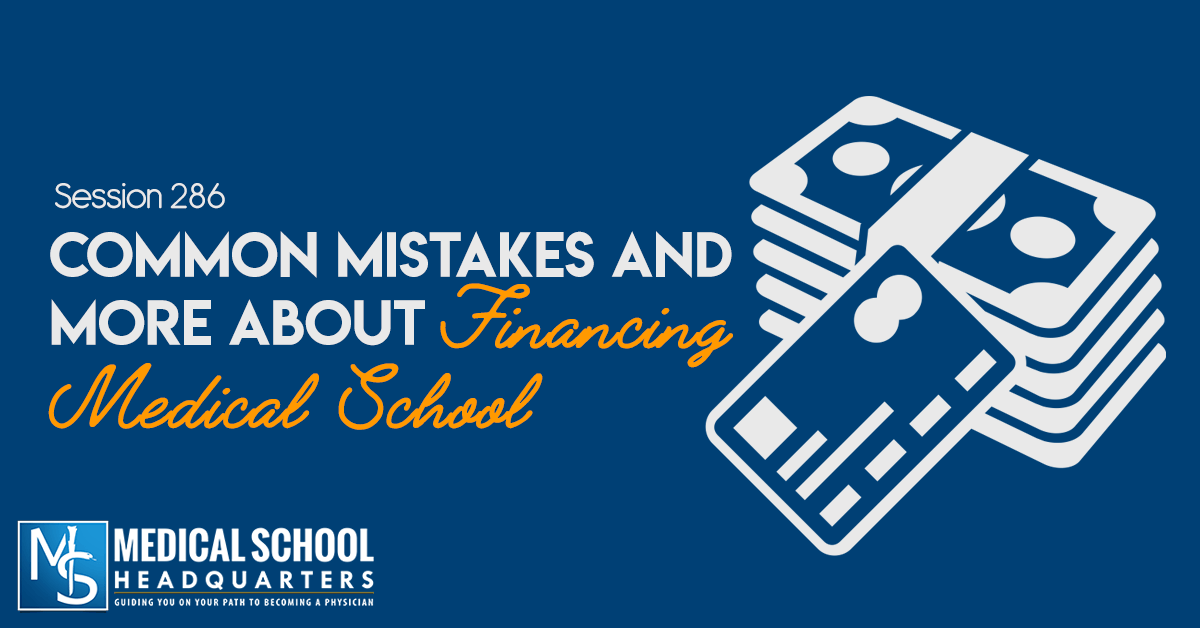
Session 286
Travis Hornsby went from trading bonds to figuring out how to pay off his wife’s medical school loans as fast as possible. Now he makes it easy for every student.
First off, The Premed Playbook: Guide to the MCAT is now available on Amazon, Kindle, and Paperback. Just a reminder, you don’t have to have a Kindle device to read a Kindle eBook. You can use a Kindle app on every device you have. It’s $4.99 for the Kindle at this point and $9.99 for Paperback.
Today, Travis is going to help you figure out how to pay for medical school, how to pay back medical school loans, how to avoid common mistakes students and physicians make, and so much more!
Any questions? Reach out to Travis thru email at travis@studentloanplanner.com.
Here’s the free student loan calculator that Travis site to help you figure out all the loans in this whole process.
[02:35] Money as a Taboo in Conversations Around Medical School
Money is such a taboo when it comes to medical school. Nobody wants to talk about it. How much loans did you take out or who did you get your loans from? Topics like the interest rates and options for getting it back are things no one wants to discuss – perhaps only except for their financial aid.
So it’s important that the more you go out there and talk with other students about this and make it less taboo, the better it’s going to be.
[Tweet “”Money in this country is a very taboo subject, not a lot of people want to talk about it. And that hurts us as we go through this process.” https://medicalschoolhq.net/pmy-286-common-mistakes-and-more-about-financing-medical-school/”]
[03:10] A Brief Background
Travis is a former bond trader turned helper of graduate students, specifically medical students among others. He’s married to a physician and has helped students with over $250 million in student loans.
Travis met his wife during her last year of Fellowship in Philadelphia. After dating for some time and having a serious conversation about money, he didn’t really realize how big student debt is in the medical world. Being a bond trader, he made a model out of an Excel spreadsheet and figured out how he can help his wife then girlfriend. eventually she asked him to figure the same for her friends and just charge them for it. This snowballed when he actually put it online, garnering thousands of views and people reaching out to him and asking questions about it.
[06:25] How Long Can You Pay Back Those Loans?
Travis explains the two approaches physicians take when paying back loans, where they either work for not for profit hospital and going for a loan forgiveness approach. But for a person who is supposed to pay back the debt and working for private practice or trying to pay down as quickly as possible, the people making good incomes are paying it down for around 5-7 years. This is for the high-income specialties. While for the modest income specialties, he gives it around 10-15 years. His wife’s boss even still have student loans and to think he’s now on his late 40s.
[Tweet “”Because of the higher than average incomes, the people eventually become attendings, their payment periods on average are still reasonable and approachable.” https://medicalschoolhq.net/pmy-286-common-mistakes-and-more-about-financing-medical-school/”]
[07:45] Live Like a Resident Even After Training
Travis considers physicians as low risk borrowers compared to business people for example. So banks aren’t always going to make terms very attractive to lend you money. He stresses that you’re supposed to live like a resident for at least a few years out of training. Say you’re buying a house, just pretend you’re a teacher and that’s your income for the next four or five years. And live like that until your net worth is about at least zero.
[Tweet “”The adage with Jim Dahle that you’re supposed to live like a resident for at least a few years out of training is super accurate and it’s a big problem.” https://medicalschoolhq.net/pmy-286-common-mistakes-and-more-about-financing-medical-school/”]
[10:55] For the Nontrad Students
Travis thinks that people in their 30’s and 40’s who feel like they haven’t gotten out of the career they want and they feel like they have to work until they’re 70s then that’s fine. But if the decision is becoming a physician and working until your 70s or not becoming a physician and working until you’re early 60s or late 50s – which one of these is more appealing?
[Tweet “”Make sure you have an absolute passion for medicine. You’d have so much regret if you ever haven’t experienced a life for the rest of the career when you didn’t become a doctor.” https://medicalschoolhq.net/pmy-286-common-mistakes-and-more-about-financing-medical-school/”]
For nontraditional students, with limited number of years that you’re going to practice, it basically boils down to a decision of the heart and emotions. But just make sure you have an absolute passion for medicine. You’d have so much regret if you ever haven’t experienced a life for the rest of the career when you didn’t become a doctor.
[12:25] For General Premed Students
Travis stresses that they keep very close tabs on the Prosper Act. Being debated in Washington currently, it’s basically change in the student loan system. And the policies being discussed right now involve curtailing a lot of these loan programs that have made people to not feel the full cost of medical school.
Travis said the big changes would be repealing public service loan forgiveness for all students who start medical school after July 1st, 2019. This being said, this wouldn’t impact anybody who’s applying, accepted, and going to medical school this Fall. Instead, this could financially affect the folks that are going to fall after that.
If you don’t have access to that program, you won’t be able to work for ten years at a not for profit hospital and wipe your hands clean with your loan; rather, you’d be responsible for the whole thing.
And if you’re thinking about going into primary care or one of the lower earning specialties, this could be a major financial burden on you if you’re going to medical school beyond July 1st, 2019.
[Tweet “”Be very cognizant and really follow closely so you can make a fully informed decision about how you’re going to finance med school.” https://medicalschoolhq.net/pmy-286-common-mistakes-and-more-about-financing-medical-school/”]
Right now, doctors have access to this public service loan forgiveness and it’s the most generous backdoor scholarship program in history. Just work 10 years and paying based on your income at a not for profit hospital. Then at the end, your loans are forgiven – without tax consequences.
[14:30] Determining Your Opportunity Cost
For example, you’re an engineer and you make $90K a year but you enjoy your job and you like the lifestyle. Compare that to being a primary care physician and taking on a big debt and just pretend you invested money along the way, while you’re working. It takes a long time for the break even math to make the physician’s job win with a bunch of debt.
The finances could work with $300K and a $150K of income, the thing Travis would usually ask is what’s the most optimal way to pay it back? You could pay the $300K back, living like a resident, being extremely frugal, getting really motivated with these debt pay-off programs. But what’s the right thing based off of your lifestyle and the math.
Travis has run into a lot of cases of lower paying specialties where people will have that $300-$400K of medical school debt. They may be in a private sector job and they’ve hit that income they feel like they’re going to be at for a while. But they went out of town and have kids or they want to work a few hours to have a more flexible lifestyle.
A lot of times, you can make the cost at today’s dollars, like “pay as you earn” for 20 years. Even though you have to pay a tax bomb at the end of it, makes more sense than actually paying the debt off just from a pure number’s perspective.
[17:40] Be Aware of Your Options
If you take out direct federal loans and this is a great question to ask your financial aid person before you go to the first dance class and get the big bill, “are my loans for the first semester going to be on the federal direct program?” If your answer to this is yes, then everything the government is saying, you’re going to be locked in to being allowed to borrow in that program with all the sweet repayment programs and all the great stuff and you’re going to keep it for the duration of your medical school career. But if you go to school and you’re given what’s called the Federal One loan or whatever they end up coming up with that’s not a direct loan, then that’s when you really have to run the numbers and think about how much you’re going to have and know you have to pay all that back.
For some of the high cost private schools out there where you’re going to come up with $400K, you can go look into other career possibilities like the military. Look at some other way to do a program to get some assistance. There’s the HPSP, NHSC, and NIH Scholarships, where you can get assistance from them if you’re doing research at a hospital.
[Tweet “”Be aware of your options. One of the difficult things with medicine is that the loan programs are so dispersed that there’s no centralized source where people can really get access to everything.” https://medicalschoolhq.net/pmy-286-common-mistakes-and-more-about-financing-medical-school/”]
[19:45] Where Loans Are Coming From and Where You’re Getting Your Money
Travis explains that the unsubsidized Stafford loans are those you want to max out and take. They’ve got a 6% interest rate, origination fee is about 1%. This is good considering you’ve got all those benefits from the federal loans programs. That’s about $40,000 a year that you can take out, so $20K each semester. Most people will need more than that. Travis suggests asking yourself, how do you come up with the answer to the questions of “where do I get that more than that money?”
So if you need more than $20k in loans a semester, where is that going to come from? If you’re planning on having an academic medical career, you like the idea working at hospitals then make sure all of your debt is with the federal government.
You don’t want to take loans that are not direct loans because those direct loans are the only loans that have access to the Public Service Loan Forgiveness (PSLF) program. This is a general rule, which means 40K a year of unsubsidized Stafford Loans and everything above that is going to be on the Grad PLUS program.
[Tweet “”If you’re planning on having an academic medical career, you like the idea working at hospitals then make sure all of your debt is with the federal government.” https://medicalschoolhq.net/pmy-286-common-mistakes-and-more-about-financing-medical-school/”]
If you’re planning on going to private practice, then the Grad PLUS program, everything you need above $40K a year, that is at a 7% interest rate instead of 6%. On top of that, the origination fee (the amount of money they charge you upfront that they take into the loan) is about 4.27%.
[23:28] Private Loans
Travis warns students that you should only do this if you’re 100% certain you’re going to go into private practice. Because if there’s any chance at all that you’re going to want to go down the not for profit road with the hospital system then taking a private loan is a disaster.
[Tweet “”If you it ever does make sense to take up private loans, you would never want to take up the full cost of med school and private debt. You want to exhaust the Stafford resources first.” https://medicalschoolhq.net/pmy-286-common-mistakes-and-more-about-financing-medical-school/”]
Travis goes on to say that the issue with private debt is that the payments during residency or fellowship could be troublesome. A number of them will refinance residents’ private student loans to nominal payments during their training. The payments are not an issue because they’ll keep it very low after the training for the private debt. And then when you come out, you can refinance the whole thing or part of it.
This is only a strategy Travis can suggest. It might save you $20K in interest, perhaps 10-40 if you go down the private practice route. That’s the reward.
If you go on the not for profit road that you have private debt and you took out private loans instead, it could cost you hundreds of thousands of dollars to take out private single loans instead of federal student loans.
Weigh the risk-reward. Weigh your future career goals. Think whether the way you’re taking your student loans out reflecting how you think your future looks.
[Tweet “”Is the way that I’m taking my student loans out reflecting how I think my future looks? A lot of people just don’t think about that.” https://medicalschoolhq.net/pmy-286-common-mistakes-and-more-about-financing-medical-school/”]
[26:22] Travis’ Advice for Premed Students
Be very cautious with credit card debt during training and during medical school in general. The student debt is better to have than credit card debt for a host of reasons. Resist the urge to equalize your consumption patterns with what you expect they’re going to be as an attending.
[Tweet “”Be very cautious with credit card debt during training and during medical school in general.” https://medicalschoolhq.net/pmy-286-common-mistakes-and-more-about-financing-medical-school/”]
Travis also suggests having $5,000- $10,000 in the bank even during training, during medical school. You always want to have enough financial cushion in case any crisis may happen to you.
[Tweet “”The general rule that keep your debt as low as possible still ring true.” https://medicalschoolhq.net/pmy-286-common-mistakes-and-more-about-financing-medical-school/”]
Additionally, Travis recommends going to the lowest cost medical school you can get into to. Compare costs and think whether you want to have more options in your life or fewer options. A person with a $200 debt has definitely more options than the one with $400K. So every medical school places people into prestigious specialties. If you’re checking out multiple places, go to the expect cost of attendants on the Financial Aid in each school’s website and look for whatever the estimated cost of attendants is for four years. Multiply it by 1.25. You’re growing that number by 25% and that’s what you’ll leave with in student debt if you borrow the full amount. Compare that number at each place and then heavily weigh the decision as to which one is the most attractive for your cost.
Links:
The Premed Playbook: Guide to the MCAT
Public Service Loan Forgiveness (PSLF) program
Get the Podcast Free!
Leave us a Review and Rating!
Just like Yelp reviews or IMDB ratings help you choose your next restaurant or movie, leaving a 5 star rating and/or a written review is very valuable to The Premed Years. It allows us to be able to share our information with more people than ever before.
I am so incredibly thankful to those who have recently gone into our listing in iTunes to provide a five start rating and a written review of The Premed Years.
Subscribe and Download
iOS/Mac/Windows – You can subscribe to the show in iTunes. Or you could manually add the RSS feed to your aggregator.
Android/Mac/Windows – You can download DoubleTwist and use that to manage all of our past and future episodes
Please help us spread the word!
If you like the show, will you please take a moment to leave a comment on iTunes? This really helps us get the word out!


